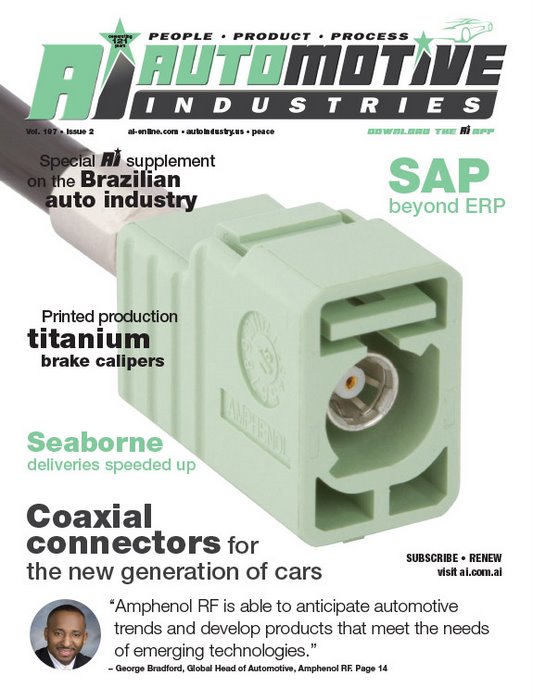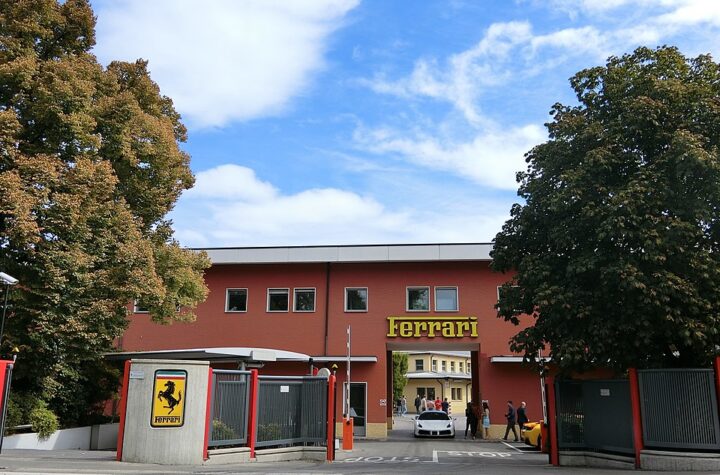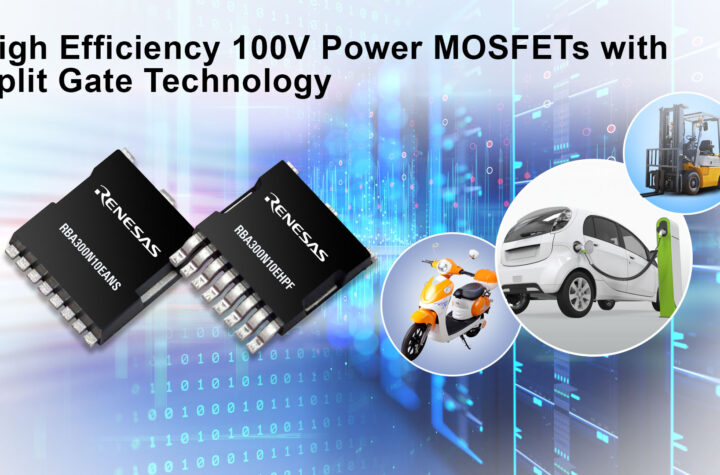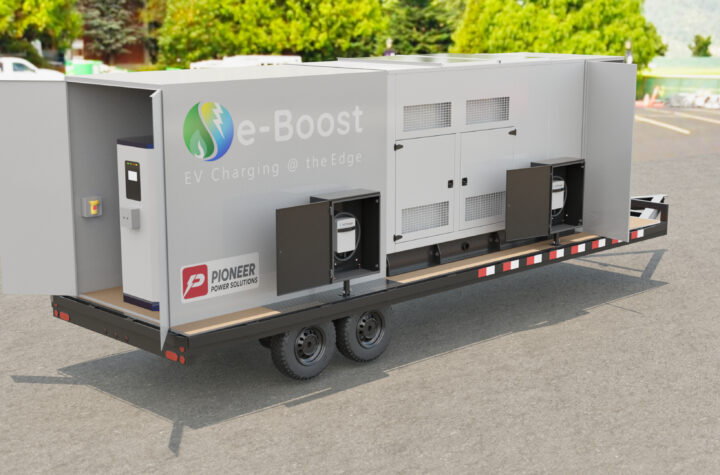
A PwC report estimates that the global connected car market will reach a value of US$123 billion by 2020, a 70% growth
from $34 billion in 2015. One of the most essential components supporting this growth are the physical connectors.
Lucintel estimates that the global connector market will reach an estimated $80.4 billion by 2023 with a compound annual growth rate of 4.9% from 2018 to 2023. The major demand drivers are growing 3C applications (Computers, Communications, and Consumer Electronics), miniaturization of electronic devices, and demand for products with advanced features, convenience, and connectivity.
All of these applications can be found in the connected car. Statista estimates that the global market for the hardware contained in the connected car is currently valued at US$31,489 million – US$12,923 m of hich is generated in the United States. This demand is driven by the increased adoption of telematics in vehicles to support services such as GPS, cellular, Bluetooth Wi-Fi, and satellite radio.
Satellite navigation systems and sophisticated in-vehicle entertainment consoles are no longer confined to the luxury end of the market. As telematic advancem ents become more reliable, available and inexpensive, vehicles are transforming into intelligent mobile platforms.
Emerging trends, which have a direct impact on the dynamics of the connector industry, include increased demand for high speed connectors, a shift towards compact and thinner connectors, and the development of high power connectors. One of the leaders in the field of automotive connector development and manufacturing is Amphenol RF. Headquartered in Danbury, Connecticut, USA, Amphenol RF has sales, marketing and manufacturing locations in North America, Asia and Europe.
Automotive Industries (AI) asked George Bradford, Global Head of Automotive, Amphenol RF, how the company supports the automotive industry.
Bradford: We are one the world’s largest manufacturers of coaxial connectors used in radio frequency and data transmission
applications. These are applications which are becoming more ubiquitous in the automotive industry with the introduction of
advanced connection systems where data is being sent and received at an unprecedented rate. Amphenol RF offers a complete range of sealed and unsealed FAKRA connectors designed to perform at up to 6 GHz. Our automotive connector product
line offers a variety of solutions for various PCB (Printed Circuit Board) interfaces, Boardto-Board, Antenna and Camera applications.
Thanks to our global team of experienced engineers, Amphenol RF is able to anticipate automotive trends and develop products that meet the needs of emerging technologies such as dedicated short-range communication (DSRC) like vehicle to everything (V2X) and autonomous vehicles.
AI: What are the standard FAKRA automotive products and applications?
Bradford:Advancements with telematics have been remarkable over the past few years, and Amphenol RF is uniquely capable of bringing together everything that the future of mobility requires. We offer a variety of FAKRA connectors to support both traditional and next gen applications: antenna technology used to support satellite, GPS (Global Positioning System), radio, Bluetooth and cellular applications, to name a few. Traditional FAKRA products are available in four generations – the latest being designed around the concept of providing a cost-effective, high volume stamped and formed solution. We also have three FAKRA product lines that are optimized to meet more specific design requirements of the automotive industry. HSD (High Speed Data) and FAKRA 6 GHz product lines are used to support vehicle-to-vehicle modules, camera vision systems such as backup and digital cameras for external surround and interior cabin monitoring systems; whereas Sealed FAKRA are IP67 rated for harsh environments and are ideal for applications where the connector may be exposed to the elements.
AJ: What are the latest FAKRA automotive components and applications for connected cars and autonomous vehicles?
Bradford: To keep up with the developing connected cars and autonomous vehicle markets, Amphenol RF is developing a Mini-FAKRA product line. Mini-FAKRA is ideal for applications requiring high bandwidth up to 20 Gbps and a footprint that is significantly less than conventional FAKRA connectors.
We are well positioned within the industry to offer customers a smaller solution regardless of which industry standard or application is required. Next generation automotive connectors will support multiple RF lines using a single connector.
Our 30, 60 and 90-degree angled connectors are designed for better cable routing to support surround view, rear view and
driver monitoring camera applications. We also have a 6 GHz PCB FAKRA designed for dedicated short range communication
(DSRC) applications such as vehicle-to-vehicle communications.
AI: Do you provide custom solutions for automotive applications?
Bradford:We are seeing more and more that customers require personalized components, customized to their design specifications. Amphenol RF offers customized FAKRA solutions that address the needs of unique applications and industry challenges. We work hand-in-hand with the customers allowing them to participate in the design from concept through
production. Customization gives us the opportunity to make lasting impressions with customers by delivering something
unique to them.
AI: What are your other capabilities?
Bradford: Amphenol RF has the largest product offering of radio frequency connectors, coaxial adapters and RF cable
assemblies in the industry. Our vast portfolio allows us to provide interconnect solutions for diverse vertical markets; both those
which are more traditional like automotive and those which have been more recently established like IoT. We offer standard
product lines that meet almost any wireless application – and if it’s not something already in our wheelhouse, our engineers can
create a custom solution designed to meet application-specific requirements.
AI: How has the industry changed in the last decade?
Bradford:This is an exciting time to be in the automotive industry. The days of buying a car only as a means to get you back
and forth to work are long gone. The speed of vehicle technology change has accelerated throughout the world and the concept
of a connected vehicle has been instrumental in empowering the industry’s transformation. The industry has recognized that they
must adhere to consumer expectations for a more connected, enriched driving experience.
The introduction of more innovative technology such as vehicle-toeverything (V2X) communications to potentially having a completely autonomous vehicle has caused original equipment manufacturers (OEMs) to change the way they operate. Basically, cars have become smart devices with advanced technology that enables autonomous driving and direct communication through increased telematics.
In today’s world, cars are being designed with artificial intelligence applications that enhance the driving experience. The trend towards more connectivity in vehicles is creating more opportunities for software developers and Tier suppliers wanting to enter and grow within the automotive industry.
AI: What’s next for Amphenol RF?
Bradford: Amphenol RF is continuing to position ourselves, through engineering and manufacturing efforts, as capable of
bringing together everything that the future of mobility requires. It is clear that vehicle applications will continue to demand
highly robust and reliable connection systems. This includes making significant investments in new technologies, working
hand-in-hand with all automotive companies to assist in delivering the most advanced, safest and reliable connections in the market.














More Stories
Renesas Introduces New MOSFETs with Exceptional Performance
VicOne at CES 2025 Showcases Award-winning Cybersecurity Portfolio and Emphasize Growing Range of Best-of-Breed Partnerships
Pioneer Announces e-Boost Order Valued at $1.3 Million